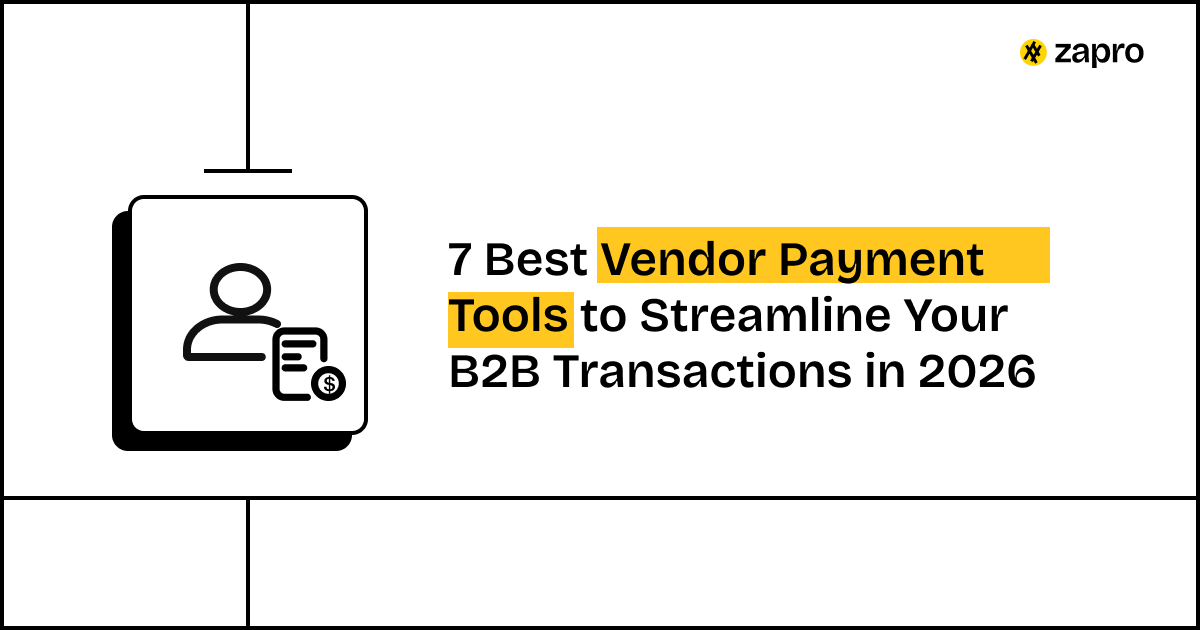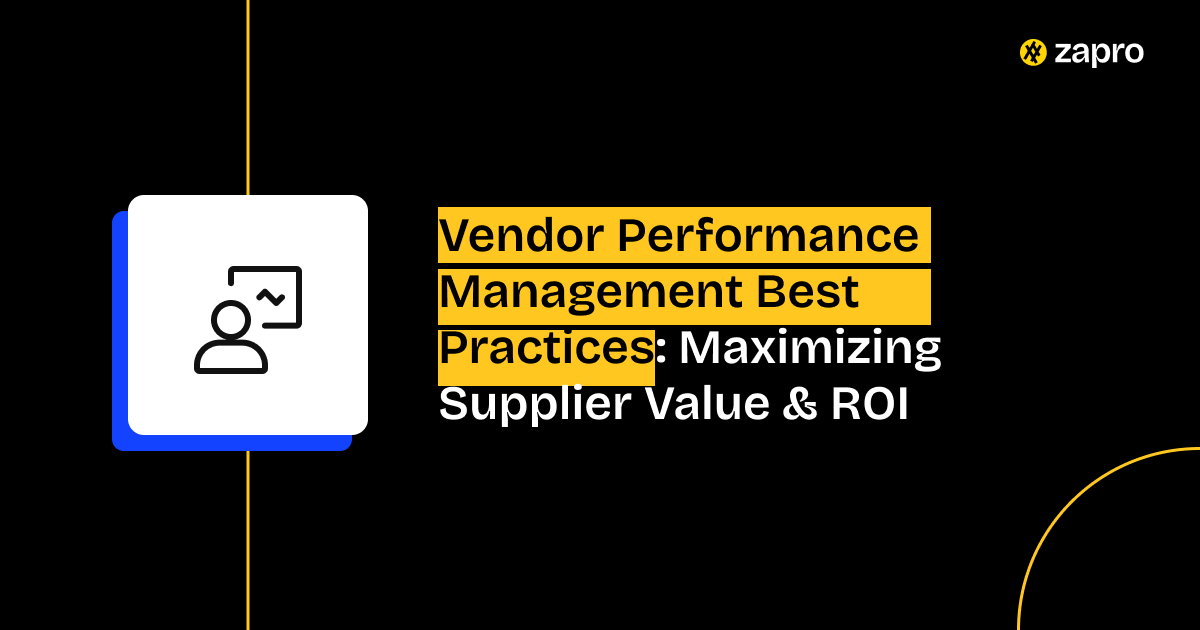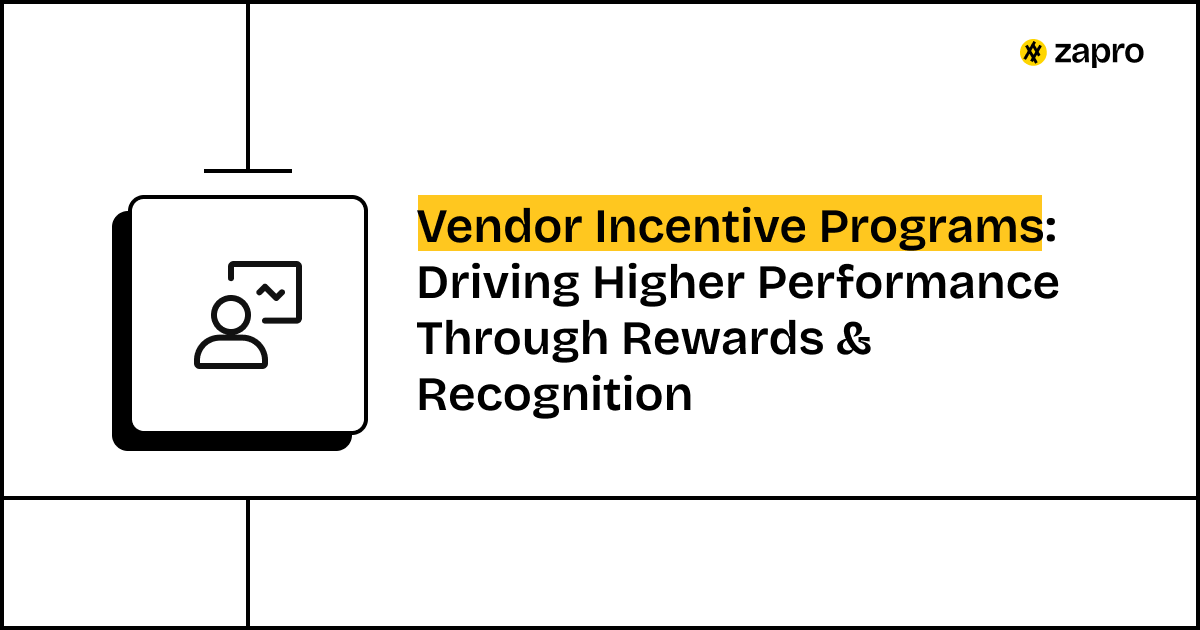You are Here: Vendor Management Software >> Vendor Exit Strategies
The process of vendor offboarding management stands as a vital but frequently disregarded element of supplier lifecycle strategy. A proper vendor exit strategy protects data integrity and maintains compliance standards and operational continuity. This guide explores vendor exit strategies together with common challenges, supplier transition plan essentials, and best practices, plus automation tools such as Zapro.ai for streamlining vendor offboarding management.
1. Understanding Vendor Exit Strategy & Offboarding
What is Vendor Exit Strategy & Offboarding?
A supplier relationship exit strategy goes beyond payment cessation because it consists of an organized process to end business ties with vendors. The process protects data security while maintaining intellectual property rights and regulatory requirements to ensure business stability and organizational reputation. The secure closure of supplier relationships through proper vendor offboarding becomes essential for maintaining audit readiness and ensuring structured vendor relationship closure.
Why It Matters
The unanticipated termination of vendor relations because of contract issues or performance problems or non-compliance leads to exposure of your organization’s data and operational disruptions along with potential legal consequences. Organizations with high data security and financial compliance needs demonstrate maturity through strategic vendor exit strategies and vendor offboarding management. The estimation from the industry reveals that non-performance together with compliance breaches drive more than 40% of offboarding incidents, which demonstrates the necessity for extensive planning aligned with contract termination best practices. [EEAT Enhancement]
2. Common Triggers for Vendor Exit
Organizations typically activate vendor exit processes due to:
- Contract expiration or change in scope
- Performance issues such as missed SLAs
- Strategic shifts, mergers/acquisitions, or divestitures
- Cost-optimization goals prompting vendor consolidation
- Regulatory concerns or non-compliance
These triggers highlight the importance of having a flexible supplier transition plan and offboarding strategy ready to deploy.
3. Key Challenges in Vendor Offboarding
Common Offboarding Pain Points:
- Data retrieval and secure deletion
- Knowledge transfer and documentation handovers
- Contract termination logistics and legal obligations
- Service continuity during transition
- Internal stakeholder coordination
The challenges lead to disorganized processes that result in missed deadlines and potential legal consequences, particularly if supplier deactivation protocols are not followed properly.
4. Best Practices for Smooth & Secure Vendor Exit
4.1. Develop a Clear Exit Plan
The creation of an offboarding checklist document enables activities for data transfer alongside knowledge sharing and legal closure procedures. The plan should contain both scheduled times and responsible parties together with methods to handle potential risks during offboarding.
4.2. Ensure Data Security
Protect IP and confidential information through encryption methods combined with access revocation and secure deletion and archival protocols. The documentation of digital activity should occur whenever possible to ensure compliant data migration.
4.3. Facilitate Knowledge Transfer
Organizations should maintain overlapping periods with exiting staff members to preserve institutional knowledge within the company. Access to essential documentation must remain available before the vendor exits for a smooth knowledge transfer.
4.4. Manage Legal & Contractual Obligations
Organizations must strictly execute all terms specified in termination clauses, together with notice periods, return of assets , and compliance requirements. The correct documentation serves to avoid disputes that could occur in the future and aligns with procurement contract termination best practices.
4.5. Communicate Proactively
Early notice to both internal staff and external parties prevents service disruptions. A transparent approach both minimizes negative feelings and establishes clear responsibility areas for better vendor relationship closure.
4.6. Conduct a Post‑Mortem
After vendor disengagement, review what went well or what failed. Update your offboarding playbook to improve performance next time.
5. The Role of Automation & Technology in Vendor Offboarding
Automation‑Powered Offboarding
The integration of vendor management platforms with contract lifecycle management (CLM) tools allows for the implementation of automated offboarding workflows. The system automatically sends notifications to stakeholders before it starts document collection and access revocation, executes supplier deactivation, and records the exit reason.
Why Automation Matters
Integrated systems reduce manual risk, ensure accuracy, and support scalable, repeatable exit processes. Compliance is baked into every step—from archive status to audit trail—streamlining the entire vendor offboarding management process.
6. How Zapro.ai Supports Seamless Vendor Exit & Offboarding (MoFu)
Zapro.ai features offboarding automation as its core foundation. Its centralized contract repository along with automated alerts for contract expirations and exit step tracking makes it simpler to manage complex disengagements and risk during offboarding.
Key Features for Controlled Vendor Transitions:
- Contract end date tracking with automatic alerts
- Exit reason logging (performance, legal, strategy)
- Document handover workflows tied to vendor accounts
- Secure data migration and capture before supplier deactivation
- Audit trail reporting and built-in compliance checklists
Case Study
The IT firm employing Zapro.ai successfully cut its offboarding duration by 50% and removed human mistakes while protecting itself from non-compliance issues. The simplified workflows resulted in flawless exit procedures, which always produced audit-ready outcomes. For more such interesting stories, visit our case study section.
7. Calculating ROI of Structured Vendor Offboarding
Cost Savings
Exit steps centralization reduces expenses from data migration errors, service interruptions and non-compliant audits. The combination of fewer legal disputes and smoother transitions leads to substantial reductions in overhead costs.
Risk Reduction
Accidental access or ownership gaps are eliminated to protect IP and client trust. A structured process enables business continuity to persist even when vendors need to be replaced, reducing risk during offboarding.
Productivity Gains
Automation frees staff from routine exit management, reducing internal effort by up to 40%. Teams can redirect time toward strategic procurement or innovation.
8. Choosing the Right Vendor Lifecycle Management Solution
When evaluating vendor management tools, prioritize:
- The system provides complete vendor lifecycle management capabilities that span from onboarding to vendor offboarding.
- The system includes pre-built compliance frameworks that manage termination, data, and legal aspects.
- The system enables users to monitor vendor operational performance and review previous exit procedures.
- The system provides reporting tools for both internal reviews and audit purposes.
- The platform should have seamless connections to ERP systems, identity management platforms, and sourcing tools.
Zapro.ai stands out as an all-in-one solution that manages the vendor journey—from onboarding to secure supplier deactivation.
9. Why Zapro.ai for Vendor Offboarding Excellence
Zapro.ai provides organizations with complete vendor lifecycle management capabilities alongside strategic offboarding workflows, compliant contract termination best practices, secure document handling, and standardized closure dashboards.
The implementation of Zapro.ai enables organizations to execute vendor exits quickly while decreasing risks and creating dependable supplier transition plans that transform vendor offboarding into an organizational advantage.
Plan Your Vendor Exit with Confidence — Start Smooth, Risk-Free Offboarding Today!

Frequently Asked Questions (FAQs)
1. Why is a vendor exit strategy important?
Your organization can prevent data breaches, service disruptions, and legal consequences through this approach, which maintains governance and safeguards assets while suppliers exit the relationship.
2. What are legal considerations when offboarding a vendor?
The contract contains specific requirements for termination notices, IP transfers, system deactivation, and asset return that need to be implemented exactly as stated.
3. How long does vendor offboarding usually take?
The duration of vendor offboarding depends on complexity, but automation with a proper supplier transition plan enables most offboarding procedures to finish within 2 to 4 weeks.
4. How do you ensure data security during vendor exit?
Automated systems execute access revocation, secure deletion protocols, archiving, and audit log retention functions to guarantee a safe and compliant exit.
5. What is knowledge transfer in vendor offboarding?
Before vendors disengage, the process of retaining operational and technical information, such as system documentation, becomes essential to maintain continuity through a structured knowledge transfer.
6. Can you offboard multiple vendors simultaneously?
Yes—Automated vendor lifecycle management systems enable parallel workflows together with coordinated timelines and centralized monitoring for efficient management of multiple supplier deactivations.
Don’t miss our weekly updates
We’ll email you 1-3 times per week—and never share your information.

 Healthcare
Healthcare Financial Services
Financial Services Technology
Technology Venture Capitalist
Venture Capitalist Chief Procurement Officer
Chief Procurement Officer Chief Financial Officer
Chief Financial Officer





